Floods in Indian state kill 28 and displace thousands
At least 28 dead after floods in India's Gujarat
- Published
At least 28 people have died and more than 24,000 have been relocated in the western Indian state of Gujarat since Sunday after heavy rains led to massive flooding.
Several rivers and reservoirs are overflowing as water levels have crossed the danger mark, officials said.
The Indian army and national disaster response teams are carrying out relief and rescue operations in the worst-hit areas.
The state is on high alert as the weather department has predicted heavy rains to continue over the next few days.
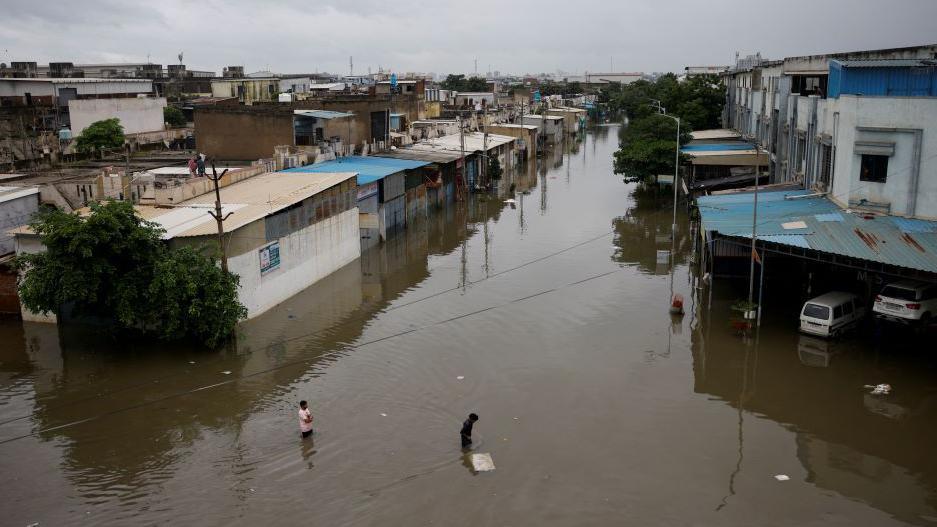
People cross a flooded street after heavy rains in Ahmedabad
Gujarat regularly witnesses severe floods during the monsoon season - in 2017, more than 200 people died in floods triggered by unrelenting rain.
According to a government report, external, many parts of Gujarat are vulnerable to floods because major rivers "pass through a wide stretch of the very flat terrain before reaching the sea".
Photos showed flooded streets and overflowing rivers. In some places, stranded people had to be rescued in helicopters.
Transport services have been disrupted in several parts and as many as 48 trains in the state were cancelled on Wednesday.
Villages and towns in the Saurashtra region have been worst-affected as they received non-stop rain for nearly 48 hours.
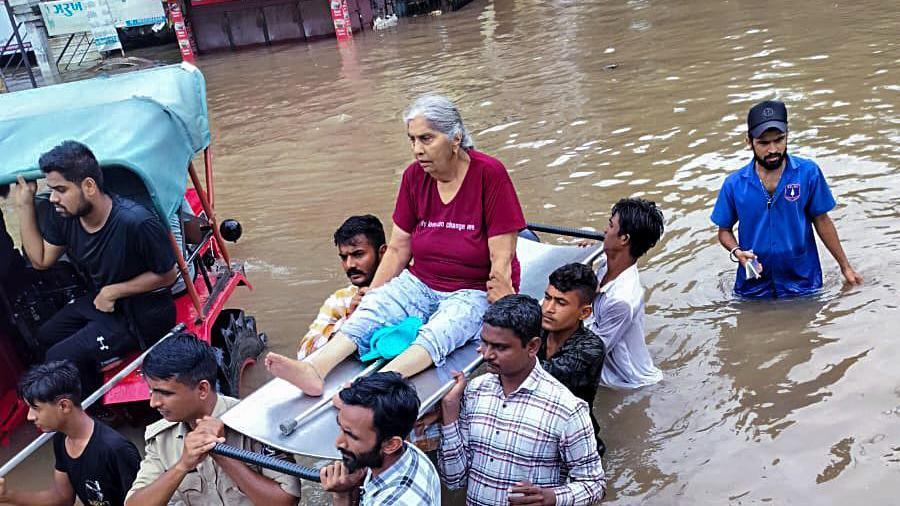
A patient was evacuated by rescue workers from a flood-affected area in Vadodara city
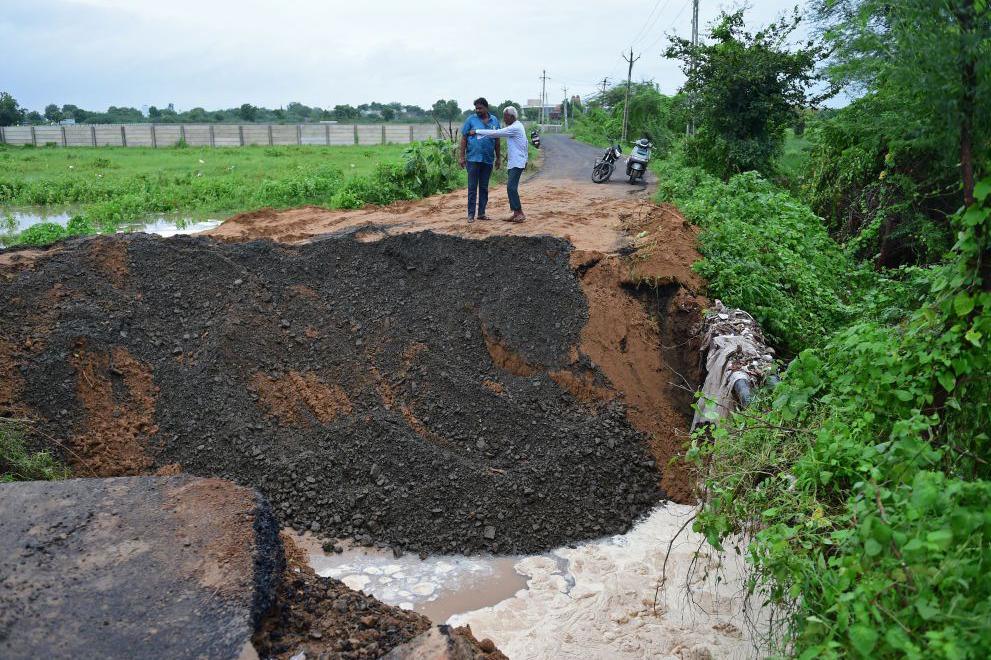
A road damaged by heavy rains on the outskirts of Ahmedabad
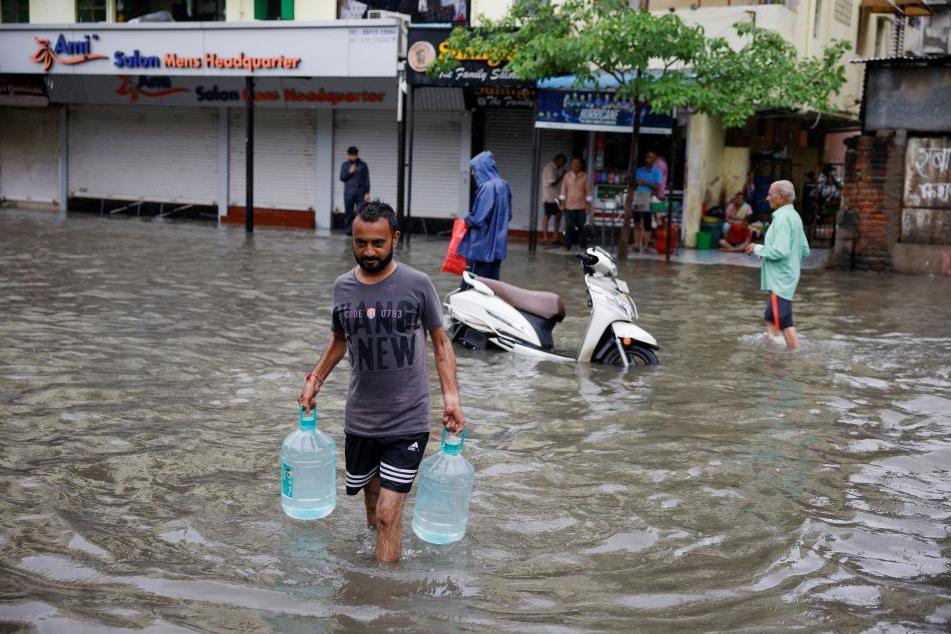
Gujarat regularly witnesses severe floods during the monsoon season

In several areas, people had to walk in knee-deep water to get to safer locations
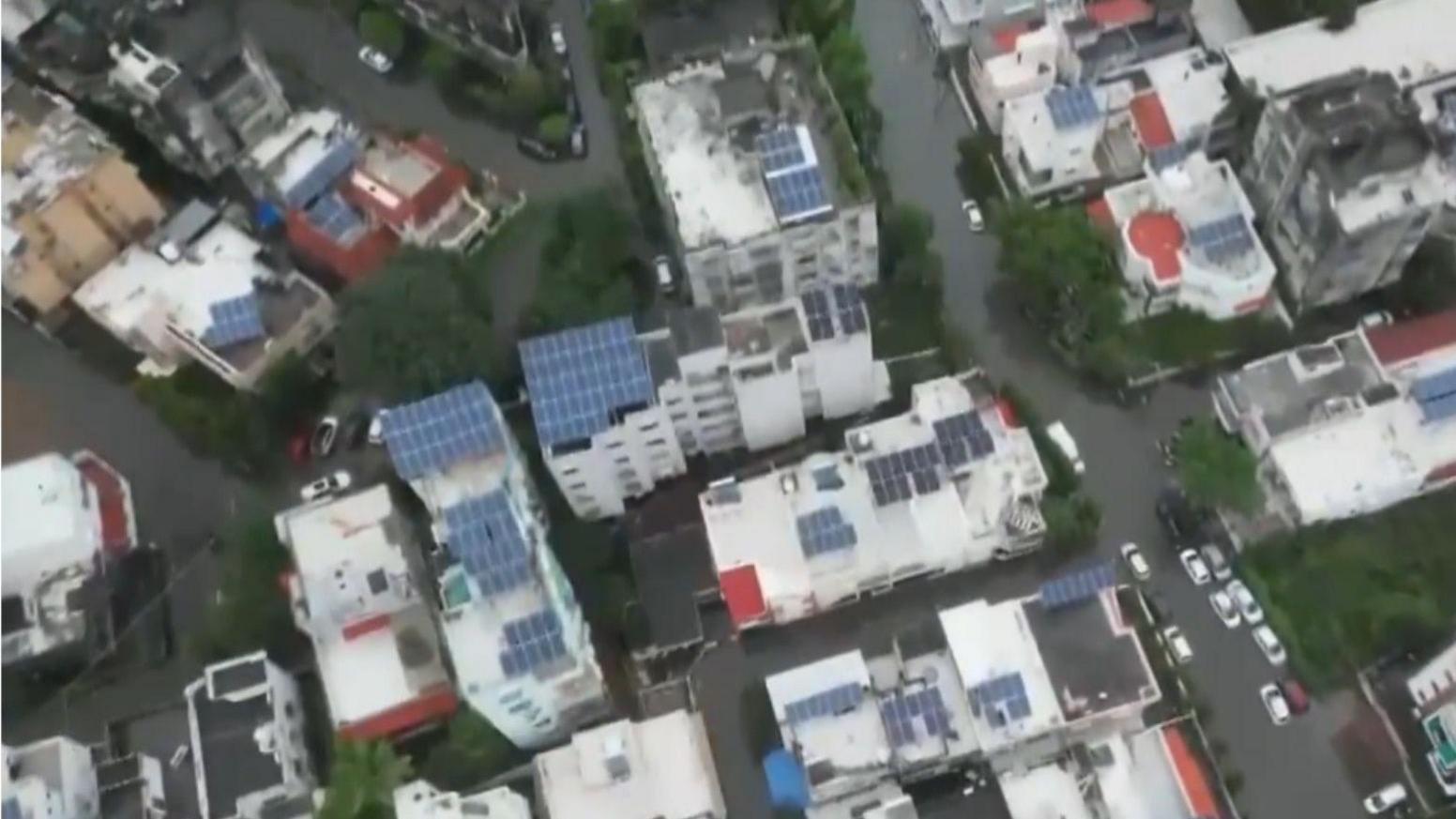
An aerial view of flooding in Vadodara city
Several farmers told BBC Gujarati that the downpour had caused extensive damage to crops like cotton and groundnut.
Weather officials expect the heavy rains to start tapering off by 1 September as the deep depression in the Arabian Sea shifts towards Pakistan.